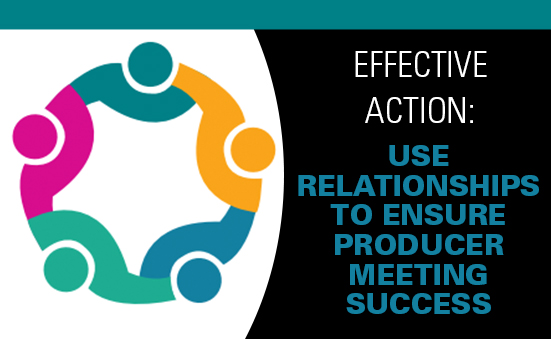In today’s competitive business environment, sales growth and customer engagement are more intertwined than ever. A successful strategy on how to grow your business focuses on converting leads into sales and building long-term relationships with customers.
There are numerous livestock and animal vitamin and mineral supplements on the market. How do you distinguish yourself from the competition? Is it value for the product offered? Customer service? You want to remain competitive and still grow your business, regardless of whether you are selling BioZyme® products or hedge posts.
We know that action equals growth. If you complete certain actions, you will grow sales, and increased sales typically lead to increased profitability.
Our team has created this blog with 6 actionable pieces of advice to help your business increase sales and foster meaningful engagement with your audience.
1. Prioritize Personalized Customer Experiences
In the age of big data, customers expect businesses to offer personalized experiences. Tailoring product recommendations, promotions and communication to individual customer preferences can significantly boost sales.
Use data from past purchases, browsing behavior and demographics to craft offers that resonate on a personal level. Personalization makes customers feel valued, which increases the likelihood of conversion and long-term loyalty.
Business Tip
Implement a customer relationship management (CRM) to manage your interactions with customers and potential customers. The goal of CRM is to improve relationships with customers to grow the business.
CRM systems can:
- Unify data: Combine customer and company data from various sources
- Track interactions: Record interactions with customers, such as sales calls, customer service interactions, and marketing emails
- Improve efficiency: Streamline processes and help teams align their efforts
- Improve profitability: Help businesses stay connected to customers and improve profitability
- Improve customer retention: Help businesses identify upsell and cross-sell opportunities and address issues promptly
BioZyme Tip
One way to personalize your customers’ experience through the BioZyme Marketing Team is to participate in the quarterly mailers. For instance, this quarter we focused on the Four Sixes™ x VitaFerm® Legendary Nutrition Protein Tub. If you have beef-producing customers who need extra year-round protein supplementation, this would have been a great mailing to opt in for. All postcards are addressed directly to your customers and look like they come directly from you, not BioZyme!
2. Leverage Social Proof to Build Trust
Customers are more likely to engage with and purchase from businesses they trust. Social proof, in the form of reviews, testimonials and case studies, plays a critical role in building that trust. Showcasing how other customers have benefited from your products or services helps potential buyers feel more confident in making a purchase.
Business Tip
Encourage satisfied customers to leave reviews and share testimonials. You can also collaborate with influencers or brand advocates to expand reach and credibility.
BioZyme Tip
Ask some well-known and respected customers to share their experiences with your products at a producer meeting. People buy from people. If one potential customer hears a testimonial that his/her neighbor has had exceptional conception rates using a product you sell, perhaps that will be just the encouragement to move that person from “potential” to “customer.” That is just one way how to grow your business!
3. Optimize for Mobile Commerce
With the majority of internet traffic now coming from mobile devices, businesses that fail to optimize for mobile are missing out on significant opportunities. Ensuring your website and online store are mobile-friendly isn’t just about aesthetics; it impacts sales and engagement directly. A seamless mobile experience is crucial for converting casual browsers into buyers.
Some may argue that it isn’t necessary to have a mobile-friendly website for farmers and ranchers. However, studies report that 94% of agricultural producers use smartphones regularly.
Business Tip
Simplify the mobile shopping experience by improving page loading speed, offering easy navigation and integrating mobile payment solutions like Apple Pay or Google Wallet.
BioZyme Tip
Perhaps you don’t sell your products online. That’s okay. However, it is still important to have a website so your customers can find you! Include your contact information, address and hours of operation.
Even if you don’t sell products online, it is still a great idea to list the products you do offer on your website. If your customer is in a rural area looking for a particular product, it will make the decision easier for them to come buy from you, if they see the product they desire on your website.
4. Implement a Multi-Channel Marketing Strategy
Your customers are everywhere—on social media, checking emails, browsing websites, listening to the radio and reading publications. To maximize your sales potential, you need to meet them where they are. A multi-channel marketing strategy ensures you’re present on all relevant platforms, giving you multiple touchpoints to engage and convert customers.
You have likely heard of the Marketing Rule of 7. This strategy is over 100 years old. It says that a person must be exposed to a message at least 7 times before they engage or make a purchase. But think about it – in the 1930s, the marketing channels were print and radio. Today, with so many mediums, a customer or potential customer needs to be exposed many more times. Most modern marketing research suggests it takes over 21 touches to have that same effect! That is why it is so vital to implement a multi-channel marketing plan as you determine how to grow your business.
Business Tip
Use email, social media, and SMS campaigns to nurture leads and promote special offers. Ensure consistent messaging across all channels to reinforce brand identity and trust.
BioZyme Tip
Rely on our Marketing Team to create ads—print, social, radio—that align with our national campaigns for each brand. If you are planning to promote DuraFerm® just before breeding season, we likely have some branded collateral ready. The same is true for every brand during each quarter. Reach out to your Area Sales Manager to find out how to use our marketing expertise to your advantage. You can also submit a marketing request for customized social content by submitting a marketing request through the Online Dealer Center.
5. Harness the Power of Data Analytics
Businesses that understand their data can make informed decisions that drive growth. By tracking customer behavior, sales trends and engagement metrics, you can identify what works and where improvements are needed. Data analytics allows you to refine your sales funnel, improve conversion rates and enhance the overall customer experience.
This is why we suggested the CRM software in our first bullet above.
Business Tip
When you invest in CRM software and other analytics tools, you can see just how powerful your marketing strategy truly is. You can use these tools to monitor your sales pipeline, customer interactions and marketing effectiveness. Additionally, your data analytics can help you determine which marketing spend leads to the most sales conversions and is a great way to plan for future marketing plans and budgets.
BioZyme Tip
Let our team at BioZyme help walk you through the analytics you’ve collected. Sometimes, a fresh perspective through a different set of eyes is what you need to fully appreciate where you’ve come and where you’re going. Lean into your ASM or call on the Marketing Team to help you analyze your data and plan the next steps of your marketing strategy.
6. Engage Customers with Value-Driven Content
Content is still king when it comes to engagement. By offering value-driven content, such as how-to guides, industry insights or interactive tools, you can position your brand as a trusted authority in your field. This not only increases customer engagement but also fosters loyalty. Valuable content keeps customers coming back, even when they’re not actively shopping.
Business Tip
Regularly publish blog posts, create engaging social media content or offer free webinars that educate and inform your audience. This not only boosts engagement but can also lead to more qualified leads. You don’t need every social media platform, but one expert suggests focusing on 1 or 2 that your audience uses regularly and using them well.
The following numbers might seem like a lot, especially when running your full-time business is your true priority. If you can post this frequently, that’s great, if not, whatever you can do will be plenty. A few posts when you’re able is always going to be better than no posts at all.
Here is a suggested frequency for posting to social media:
- Facebook: 1–2 posts per day, or 5 times per week
- Instagram: 1–2 posts per day for in-feed posts, and 2 posts per day for stories
- Twitter: 3–4 tweets per day
- LinkedIn: 1–2 posts per day
- TikTok: 1–4 posts per day
- Pinterest: 15–25 pins per day
- YouTube: 1 video per week, or 1–3 videos per week for shorts
Posting too frequently can annoy followers, and users want to see what their friends and family are doing in addition to interacting with their favorite brands. Some suggest that the best times to post are between 9 -10 a.m. or 7 p.m. in your target audience’s respective time zone.
BioZyme Tip
BioZyme creates content you can use, so you don’t have to reinvent the wheel! You are invited and welcome to share the blogs that we post on any of our brand websites. Each quarter, we also create social media posts that you can share on your own social media platforms for each brand. These posts are currently found on Promoboxx and are easy to share on your own platforms as pre-created posts that align with our current campaigns.
By applying these 6 strategies, your businesses can enhance customer engagement and ultimately drive more sales. Focusing on personalized experiences, building trust, optimizing for mobile, leveraging multiple marketing channels, using data analytics, and providing value-driven content will give any company a competitive edge in today’s market.
BioZyme Offers Marketing Assistance
BioZyme is built on great products and even great dealers. We want our dealers to succeed with the BioZyme products and in business in general. That is why we provide these educational resources on how to grow your business and guide you to take action for your business. As we know, action equals growth, and growth equals success. If you don’t succeed, we don’t either.
When you are in the Online Dealer Center, check out the Marketing Tools tab in the upper right side of the screen. Here, you will find our brand logos, a link to Promoboxx, the SAMM Center and the online form to submit marketing requests. The SAMM Center is where you can request literature, wearables and more to help promote your business. If you are looking for personalized signage, a specific print or radio ad or want to host a producer meeting, you will need to submit a marketing request.
We hope these 6 strategies have helped you determine how to grow your business. We want you to drive customer engagement and we want you to succeed!










